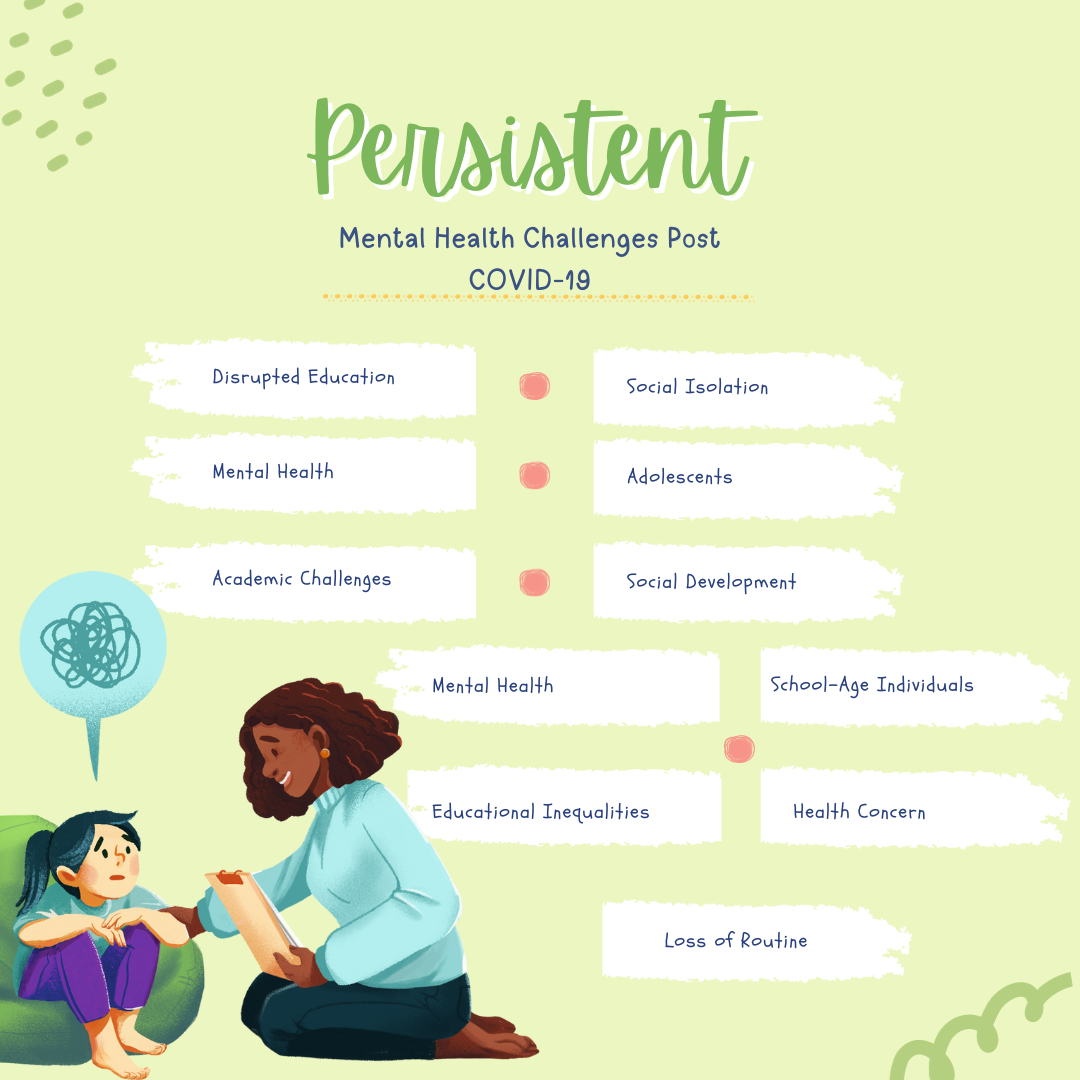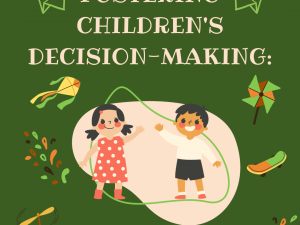This post was thoughtfully written by Lu Lu, Professional Counselor Associate. Check her profile out to learn more about her!
The COVID-19 pandemic brought unprecedented disruptions to our lives, leaving no one untouched by its far-reaching effects. While the world has made significant strides in controlling the spread of the virus and rolling out vaccination campaigns, the mental health ramifications of the pandemic continue to loom large, particularly among adolescents.
Even as society inches towards a semblance of normalcy, the shadow of persistent mental health challenges remains.The pandemic ushered in a period of intense uncertainty and isolation, with lockdowns and social distancing measures disrupting the routines and social interactions that are critical for the well-being of adolescents. The abrupt transition to remote learning, coupled with the absence of in-person socializing, had profound effects on young minds. Initially, there was hope that these measures would be temporary, but as weeks turned into months, the toll on adolescent mental health became increasingly evident. One of the most prominent mental health challenges to emerge during the pandemic was the surge in anxiety and depression among adolescents. Feelings of fear and uncertainty, coupled with the loss of routine and social support systems, contributed to a sense of helplessness and despair. The already fragile mental health of some teenagers deteriorated further, while others experienced mental health challenges for the first time.
The extended period of remote learning posed unique challenges. For many adolescents, school is not just a place of education but also a hub for social interaction, emotional support, and a sense of belonging. The isolation imposed by remote learning disrupted these vital aspects of their lives, leading to increased feelings of loneliness and detachment. The loss of structured
routines and extracurricular activities also had a detrimental impact on mental well-being. Moreover, the pandemic highlighted and exacerbated existing inequalities in access to mental health support. Adolescents from disadvantaged backgrounds often lacked the necessary resources to access online counseling or therapy, further deepening disparities in mental health outcomes. As a result, marginalized populations faced additional barriers in addressing their mental health needs. While vaccination campaigns have brought optimism, the journey towards recovery is far from over. The mental health challenges brought to the forefront during the pandemic continue to persist, and their consequences are likely to be long-lasting. It is crucial to recognize that the effects of the pandemic on adolescent mental health are not isolated incidents but are part of a larger narrative of the ongoing mental health crisis. Addressing these persistent mental health challenges requires a multi-pronged approach. First and foremost, there is an urgent need to provide accessible and affordable mental health services to adolescents. Schools should prioritize mental health support, offering counseling services and creating safe spaces for students to discuss their concerns. Community organizations and healthcare providers must collaborate to reach underserved populations.
Additionally, education around mental health should be integrated into school curriculum, helping adolescents build emotional resilience and coping skills. Efforts should also focus on reducing the stigma surrounding mental health issues, encouraging open conversations, and promoting a culture of empathy and support. In conclusion, the COVID-19 pandemic has left an indelible mark on adolescent mental health, with persistent challenges continuing to affect young lives. As we move forward, it is imperative
that we prioritize the mental well-being of our adolescents and allocate resources and support accordingly. Recognizing the ongoing nature of these challenges and taking concrete steps to address them is not just a matter of public health but a moral imperative to ensure the future well-being of the next generation.
The Impact of COVID-19 on Children, Adolescents, and All School-Age Individuals:
The COVID-19 pandemic has left an indelible mark on children, adolescents, and all school-age individuals, reshaping their lives in profound ways. These critical developmental stages are characterized by rapid physical, cognitive, and emotional growth, making the pandemic’s impact particularly significant.
Children: The youngest members of society, children, have faced a host of challenges during the pandemic.
Disrupted Education:
The closure of schools disrupted the structured learning environment that children rely on for academic and social development. The abrupt transition to remote learning posed difficulties in terms of access to technology, maintaining attention, and effective learning. For children with special needs, the loss of in-person support services was especially challenging.
Social Isolation:
Children thrive on social interactions, and the absence of playdates,
schoolmates, and extracurricular activities created a void in their lives. Isolation from peers not
only impacted their emotional well-being but also hindered the development of crucial social
skills and emotional intelligence.
Mental Health:

While children are generally resilient, the stress and uncertainty of the pandemic took a toll on their mental health. Many experienced anxiety, mood disturbances, and even post-traumatic stress symptoms. The ability to comprehend the gravity of the situation varied with age, but even young children sensed the disruption and fear around them.
Adolescents:
Adolescence is a period marked by significant changes in identity, independence, and social interactions. The pandemic presented unique challenges for this age group.
Academic Challenges:
Adolescents faced disruptions in their academic lives as schools shifted to remote learning. The sudden change in routine, coupled with increased academic expectations, created stress and a sense of uncertainty about their educational future. Standardized testing, college admissions, and career plans were all affected.
Social Development:
Adolescents prioritize peer relationships and social experiences as they form their identities. Lockdowns and restrictions limited their ability to engage in typical social activities, leading to feelings of isolation and loneliness. Many missed out on significant milestones, such as proms and graduation ceremonies.
Mental Health:
Anxiety, depression, and other mental health issues became more prevalent among adolescents during the pandemic. The uncertainty of the times, coupled with social isolation, disrupted routines, and academic pressures, contributed to an increase in emotional distress. Access to appropriate mental health support and coping mechanisms became paramount.
School-Age Individuals:
The impact of the pandemic extended to all school-age individuals, encompassing a diverse range of experiences
Educational Inequalities:
The shift to remote learning highlighted educational inequalities. Access to technology, a conducive learning environment, parental support, and resources greatly influenced the quality of education received during the pandemic. These disparities exacerbated existing educational inequalities.
Health Concerns:
The fear of contracting the virus and the disruption of daily routines had physical and mental health implications. Many school-age individuals grappled with the anxieties and uncertainties surrounding their health and that of their loved ones.
Loss of Routine:
Routine and structure are essential for school-age individuals. The disruption of daily routines, including extracurricular activities and social engagements, left a void in their lives and made adapting to the “new normal” challenging.
The COVID-19 pandemic had a profound and multi-faceted impact on children, adolescents,
and all school-age individuals. While some showed remarkable resilience, others struggled with
the uncertainties and disruptions brought about by the crisis. Recognizing the diverse needs of
these age groups and providing targeted support for their physical, emotional, and educational
well-being remains essential as we navigate the ongoing challenges posed by the pandemic.








